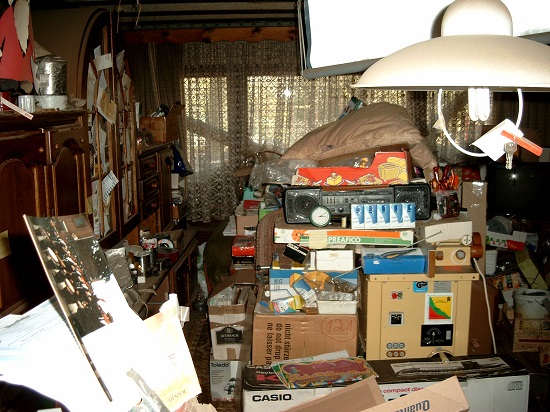Project Management Hoarding
Regardless of what project management software you use, be it JIRA, Asana, Trello, or whatnot, one thing is true for all of them: adding new tasks is really easy. Finishing things requires actually doing the work or coming up with an extremely compelling reason to delete a task. The notion of tasks being easy to create and hard to remove will naturally result in many tasks piling up.

There are good reasons for this. One is that allowing everyone on a team to have input on a project is a good thing. Being heard is motivating and great ideas can come from anyone. No one wants a great idea to be lost either, so into the project management software it goes.
Unfortunately, ideas are a lot easier to come up with than actually implementing them. You or I could come up with years worth of work in less than an hour. That’s before bugs and feedback start pouring in from users as well. This results in hundreds of tasks piling up for a project that will never be worked on.
These tasks don’t just pile up either. They need to be managed. They come up in search results for searches on other things. They come up when we list tasks by label. More importantly, we feel the need to do something about them because we know they’re there. Maybe it’s just a message to someone asking for an update. Or a quick discussion in a planning meeting about whether today is finally the day a task gets worked on.
A lot of time gets spent on these tasks even though not one minute is spent on implementing them. Sometimes things get so extreme that a culling happens. In the best case, this culling involves deleting hundreds of tasks that have not been touched in months. That isn’t what always happens though. Sometimes all those tasks just get relabeled or reprioritized. If they were marked unimportant before, a new level of unimportance is created for those tasks. The equivalent of shoving your mess into a closet or under your bed.
Ironically, we all treat the act of hoarding as a problem that people need to solve. Useless stuff takes up space in our homes which makes it harder to find the stuff we do use and care about. Digital hoarding of project tasks doesn’t have a negative physical impact, but it still wastes time in managing all that “stuff”. It distracts us from the things we really need to focus on.
There aren’t easy answers to this problem. The option to have an occasional culling where tasks are deleted is a compelling one. However, a lot of time is still spent managing those tasks until a decision to cull is made.
A more efficient solution would be to make it much harder for a task to get created. Instead of just saving ideas by default, more justification has to be made in order to prove out the ideas value and the likelihood of actually implementing it. Everyone on a team can still be heard, but not everything needs to be recorded.
The challenge is the process in determining whether a task is worth recording or not. Saving everything is typically done because it is the easy decision to make. As with hoarding physical stuff, we default to the idea that “I may need this someday” when someday rarely comes. It doesn’t help that like physical stuff (e.g. old beepers), ideas can also have a shelf life. A project can change direction so significantly that hundreds of those old tasks in JIRA are no longer relevant.
I don’t have any easy answers to solving this problem (pointing out problems are so much easier). One thought I’m toying with is keeping many of these ideas in a separate database. For example, if Trello is used as the main project management software, dump everything that’s not likely to be worked on in JIRA. It’s still hoarding, but at least things are being put in a shed in the backyard instead of blocking the entrance to the bathroom.
I keep this blog around for posterity, but have since moved on. An explanation can be found here
I still write though and if you'd like to read my more recent work, feel free to subscribe to my substack.








